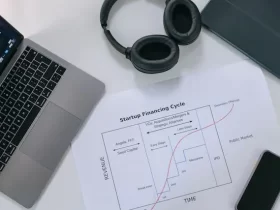It is no exaggeration to affirm that crude oil represents one of the most liquid commodities across the globe. This implies that it boasts high volumes, as well as clear charts, for oil trading. Often regarded as black gold, crude oil finds applications in the manufacturing of plastics, cosmetics, petroleum, pharmaceuticals, and cars.

The high volatility of oil prices – in recent times – has made trading within the oil markets a risky investment. With this in mind, it is imperative for investors to understand how demand and supply can influence the prices of oil. To lend you a hand, this comprehensive guide will provide an insight into the various tips on how to trade crude oil. So, keep on reading!
Meaning of Oil Trading
Oil Trading involves the buying and selling of all kinds of oil-linked assets to make profits. Like many other finite resources, oil prices are significantly influenced by demand and supply. This makes it a highly volatile asset, which is a desirable attribute among some traders.
You can trade on oil’s spot price by making use of CFDs, as well as prices of oil futures, without possessing any actual oil. These choices come with individual risks, which involve exposure to a highly volatile commodity.
Why Trade Crude Oil?
Crude oil is a crucial resource in the economy. Besides being a source of energy for transportation, it is an important raw material for various manufacturing processes. It is the most heavily traded commodity in the world. As prices rise and fall, suppliers and consumers are often slow to adjust production and consumption. This is due to the fact that crude oil is essential and the production process can be quite lengthy.
This implies that oil prices must adjust to ensure that the market is rebalanced after a change in demand and supply, which could be due to several reasons, including economic sanctions or war. At present, crude oil is the primary energy source globally. In an age when there is a rising human population, as well as increased consumption of recreational and agricultural goods, there is high pressure on demand and supply.
Crude Oil Trading Tips
Investors must be acquainted with the several fundamental factors that can influence the price of oil while adopting a trading style. The trading strategies are different and investors must understand some tips that can help them avoid top trading mistakes. Some of these are introduced as follows:
Fundamental Analysis
Crude oil is often traded in large volumes and traders are left with extensive data to analyze. To fully understand how the oil market works while being able to speculate, it is imperative for traders to do some research of their own. This includes fundamental analysis. With this, traders can familiarize themselves with market trends.
Technical Analysis
Technical analysis includes studying graphs, price charts, and technical indicators. These are needed to obtain numerical information that can help in making better decisions. Since oil trading can be highly volatile, it is important to get a comprehensive perspective.
Risk Management
With high volatility comes a high level of risk, which must be managed properly. After a trader adopts technical analysis to obtain relevant information, they can implement the right risk management strategies. For instance, to manage risk, an investor might set a take-profit, which can be above a recent high, while setting a stop-loss at a recent low.
Conclusion
Crude oil is an essential source of energy across the globe. For this reason, it is not just highly demanded, but also highly traded. It is crucial for investors to consider the various factors that can significantly influence the demand and supply of crude oil. Even though the high volatility of crude oil prices translates to a high-risk level, it is a property that makes the commodity an attractive prospect for investors to predict.












Leave a Reply